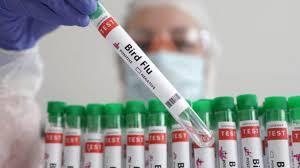The FDA has initiated broader testing of dairy products for bird flu. They plan to sample 155 additional products in this expanded effort. The primary goal is to ensure that pasteurization effectively inactivates the virus.
Previous FDA testing of 297 retail dairy samples yielded negative results for the virus. This proactive approach aims to maintain food safety and public confidence in dairy products.
Bird Flu Spreads Among US Dairy Herds

More than 120 dairy herds across 12 states have tested positive for bird flu since March. The USDA reports this widespread outbreak among dairy cattle. Federal officials warn that further spread could increase the risk of human infections.
This situation represents an unprecedented spread of avian influenza in mammalian populations. The rapid expansion of affected herds has raised concerns about potential impacts on the dairy industry and public health.
Risk Assessment for General Public and Workers

Federal officials maintain that the risk to the general public remains low. However, they acknowledge a higher risk for dairy farm workers. Authorities recommend that farm workers wear personal protective equipment to reduce infection risk.
The CDC has monitored over 690 people exposed to infected or suspected infected animals. This differentiated risk assessment guides public health measures and individual precautions.
Raw Milk Consumption Strongly Discouraged

The FDA strongly advises against the consumption of raw milk products. No infected dairy cow herds are known to be contributing to the raw milk supply. The USDA’s acting senior adviser for bird flu response, Eric Deeble, confirmed this information.
Raw milk poses inherent health risks, which are potentially amplified during disease outbreaks. This advisory aligns with longstanding public health recommendations against raw milk consumption.
Human Infections: Current Cases and Monitoring

Three dairy farm workers have tested positive for the bird flu virus. These cases presented with mild respiratory symptoms or conjunctivitis. All infected individuals have recovered from their symptoms.
The CDC has tested 51 people who developed flu-like symptoms after exposure. This low number of human infections suggests limited human-to-human transmission but warrants continued vigilance.
CDC Supports Serological Testing of Workers

The CDC is providing technical support for serological testing in Michigan. This testing aims to detect signs of prior infection in farm workers. The agency plans to extend this testing capability to other states.
Serological testing can reveal the extent of asymptomatic or undetected infections. This data will inform public health strategies and risk assessments.
USDA Researches Virus Transmission in Cattle

The USDA is conducting research on how dairy cattle contract the virus. They are investigating transmission through contact with infected milk or respiratory droplets.
This research is crucial for developing effective prevention strategies. Understanding transmission pathways can inform biosecurity measures on farms. The findings may also guide future vaccine development efforts.
Vaccine Development for Dairy Cows Underway

The USDA hopes to eradicate the virus without using a vaccine. However, they acknowledge that developing a bird flu vaccine for dairy cows will take time.
Agriculture Secretary Tom Vilsack revealed discussions with two dozen companies about vaccine development. Vaccine development faces challenges due to the virus’s ability to mutate. A successful vaccine could provide a crucial tool for controlling future outbreaks.
Pasteurization Effectiveness Under Scrutiny

The FDA’s expanded testing focuses on confirming pasteurization’s effectiveness against the virus. Pasteurization is a critical food safety process for dairy products.
Previous studies have shown pasteurization effective against other influenza viruses. Confirming its efficacy against bird flu will reassure consumers and the dairy industry. This testing is part of a comprehensive approach to ensure food safety.
Monitoring and Testing of Exposed Individuals

Over 690 people exposed to infected or suspected infected animals have been monitored. The CDC has tested 51 individuals who developed flu-like symptoms. This extensive monitoring helps detect potential human-to-human transmission early.
It also provides valuable data on the virus’s behavior in human hosts. The low number of positive cases suggests current control measures are effective.

